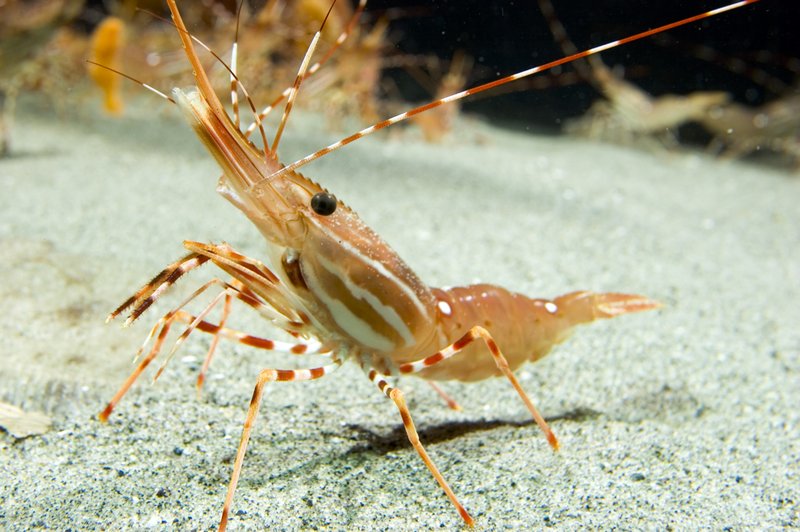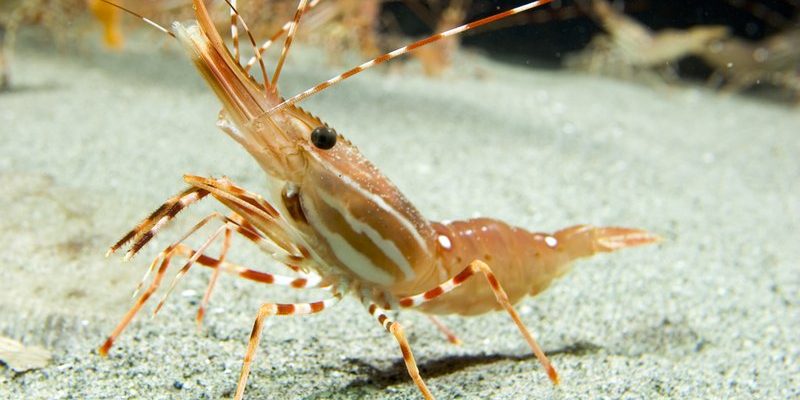
You might be surprised to learn that when we talk about prawns, we’re actually discussing a fascinating group of crustaceans that share similarities with shrimp but have some notable differences. Imagine them as the superheroes of the sea, donning their hard exoskeletons and sparkling with a variety of colors. Prawns are known for their sweet, delicate meat, making them a popular choice in many cuisines around the world. From the bustling markets in Asia to fancy restaurants in Europe, they’re celebrated for their versatility and taste.
Prawns belong to the suborder Natantia, which includes both prawns and shrimp. While they can often be used interchangeably in recipes, they aren’t the same! Prawns usually have larger bodies, longer legs, and are generally sweeter than shrimp. They thrive in various ocean climates, from warm tropical waters to cooler northern seas. So, whether you’re enjoying shrimp cocktails at a party or a prawn curry at home, you’re part of a global love affair with these incredible sea creatures.
Physical Characteristics
Prawns are striking creatures, often admired for their shimmering shells that come in various shades, including pink, blue, and green. Their bodies are segmented, with a tough outer shell that protects their soft meat. Did you know that the size of prawns can vary greatly? They can range from just a couple of inches to over a foot long! Not only do they boast impressive size, but they also have long, slender antennae that help them navigate their environment.
Another interesting feature is their tail, known as the telson. This is where the mythological image of prawns lurking in the shadows comes from. It gives them the ability to swim backwards quickly, helping them escape predators. For many, this is where the allure of prawns lies — their combination of beauty and survival skill adds to their mystique. The next time you see a prawn, take a moment to admire its features; you’ll appreciate the intricacies of nature.
Habitat
Prawns are quite adaptable when it comes to their habitat. They can be found in a wide range of environments, from shallow coastal waters to the deep sea. You can spot them in brackish waters, which is a blend of salt and freshwater, as well as in freshwater rivers and lakes. Their ability to thrive in different climates can be compared to a chameleon, seamlessly blending into their surroundings and adjusting to the conditions.
Generally, prawns prefer warm waters where food is abundant. They often hide in crevices, under rocks, or among aquatic plants, making them skilled at avoiding predators. Think of them as the introverts of the sea, favoring cozy nooks where they can munch on algae, plankton, and small fish. This preference for specific habitats makes them interesting subjects for ecologists studying marine life and ecosystems.
Diet
When it comes to dining, prawns are opportunistic eaters. They have a varied diet that includes algae, plankton, and detritus, which is the organic material that settles on the ocean floor. Imagine them as the cleanup crew of the underwater world, helping maintain a balanced ecosystem by consuming leftover waste. This diet not only keeps them healthy but also contributes to their sweet flavor, which we’re lucky enough to enjoy in culinary dishes.
Prawns use their modified legs to sweep food particles towards their mouths, showcasing their effective foraging skills. In aquaculture, farmers often provide a balanced diet for prawns, including formulated feed that promotes growth. By understanding what these creatures eat and how they forage, we can better appreciate the delicate balance of marine ecosystems and consider sustainable practices when enjoying prawn dishes.
Interesting Facts
| Size: | Varies from 2 inches to over 1 foot |
| Habitat: | Found in both saltwater and freshwater environments |
| Diet: | Omnivorous; feeds on algae, plankton, and small aquatic organisms |
| Lifespan: | Typically 1-3 years, depending on species |
| Reproduction: | Females can produce thousands of eggs, increasing chances of survival |
Types of Prawns
There are many species of prawns, each with unique characteristics and habitats. One of the most popular is the Whiteleg prawn, also known as the Pacific white shrimp. It’s a favorite in the farming industry due to its fast growth rate and delicious taste. Another notable species is the Black tiger prawn, known for its striking stripes and robust flavor. When prepared, their meat is both sweet and slightly firm, making them a culinary delight.
If you enjoy a good shrimp cocktail, you might come across the Rose shrimp. This variety has a lovely pink hue and a delicate flavor that pairs perfectly with tangy sauces. On the other hand, the Giant river prawn holds the title for one of the largest species, prized for its size and flavor in certain Asian cuisines. Each type of prawn brings something different to the table, quite literally!
How to Cook Prawns
Cooking prawns can be both exciting and intimidating if you’re not familiar with them. Here’s the thing: they’re incredibly versatile! You can boil, grill, sauté, or even bake them, depending on your culinary inclination. One popular method is to simply toss them on the grill. The high heat caramelizes their natural sugars, enhancing their sweet flavor. Just remember, prawns cook quickly, typically in just a few minutes!
Another delicious option is to make a classic prawn stir-fry. Pair them with colorful vegetables and a tasty sauce for a quick, healthy meal. If you’re feeling adventurous, you might even try making a traditional prawn curry, where the prawns soak up rich spices and coconut milk, creating a mouth-watering dish. The key is to avoid overcooking, as this can lead to rubbery meat. Timing is everything—watch for that beautiful pink color, and you’ll know they’re ready!
Health Benefits of Prawns
Beyond their amazing taste, prawns also offer a range of health benefits that make them a nutritious choice for your diet. They’re low in calories and fat, making them a great protein source for anyone watching their intake. In fact, a 3-ounce serving of cooked prawns has about 20 grams of protein! Plus, they’re packed with essential vitamins and minerals, including vitamin B12, iodine, and selenium, all of which play vital roles in maintaining your overall health.
Moreover, prawns contain omega-3 fatty acids, which are known to support heart health by reducing inflammation and improving cholesterol levels. It’s like a tiny package of health benefits swimming in the sea! If you’re trying to eat healthier or incorporate more seafood into your meals, prawns can be a tasty and nutritious choice.
Environmental Impact
While enjoying prawns can be delightful, it’s essential to consider the environmental impact of prawn farming and fishing. Overfishing and unsustainable practices can lead to serious ecological consequences. When prawns are caught in the wild, there’s a risk of disrupting marine ecosystems and depleting fish populations. On the other hand, prawn farming can also have detrimental effects if not done responsibly, as it may lead to habitat destruction and pollution.
As consumers, we have the power to make a difference. By choosing prawns sourced from sustainable fisheries or farms that practice responsible aquaculture, we support healthier oceans and ecosystems. Look for certifications like the Marine Stewardship Council (MSC) label when buying prawns, ensuring that you’re making environmentally friendly choices. It’s a win-win: you enjoy your favorite seafood while promoting conservation efforts.
FAQ
Are prawns and shrimp the same thing?
While they are often confused, prawns and shrimp are different species. Prawns typically have larger bodies and longer legs than shrimp. They also belong to different families within the crustacean group, leading to variations in taste and texture.
Can you eat prawn shells?
Yes, prawn shells are technically edible, but they can be tough and not particularly pleasant to eat. Some people choose to eat the shells, especially when they’re fried or cooked in broths, as they add flavor. However, most prefer to peel them off before enjoying the meat inside.
How many calories are in prawns?
Prawns are relatively low in calories. A 3-ounce serving of cooked prawns contains about 84 calories, making them a healthy option for those looking to control their weight while still getting a good protein source.
How long do cooked prawns last in the fridge?
Cooked prawns can last in the fridge for about 3 to 4 days when stored correctly in an airtight container. However, it’s best to consume them as soon as possible for optimal freshness and taste.
What is the best way to thaw frozen prawns?
The most effective way to thaw frozen prawns is to place them in the refrigerator overnight. If you’re short on time, you can also put them in a bowl of cold water for about 30 minutes. Avoid using warm water, as this can lead to uneven thawing and affect the texture.
Are prawns safe to eat during pregnancy?
Yes, prawns are generally safe to eat during pregnancy when properly cooked. They provide valuable nutrients, but it’s crucial to avoid raw or undercooked seafood to reduce the risk of foodborne illnesses. Always opt for thoroughly cooked prawns in your meals.
What do prawns taste like?
Prawns have a sweet and slightly briny flavor with a firm texture when cooked correctly. Their taste can vary slightly depending on the species and how they are prepared, but they are generally loved for their mild sweetness and versatility in dishes.
Can you cook prawns with their shell on?
Absolutely! Cooking prawns with their shells on can enhance the flavor of the dish, as the shells contribute to a richer taste. Just remember to take them off before serving, or provide a bowl for guests to discard them if you’re hosting a dinner.
Are there any allergies associated with prawns?
Yes, prawn allergies are common and can cause reactions in sensitive individuals. If you have a shellfish allergy, it’s best to avoid prawns and other crustaceans altogether, as allergic reactions can range from mild to severe.
How can I tell if prawns are fresh?
Fresh prawns should have a clean, salty smell—not a strong fishy odor. Their shells should be shiny and firm, and the flesh should be translucent. If they appear dull or have an off-putting odor, it’s best to avoid them for your safety.
Where can I find sustainable prawns?
Look for prawns certified by reputable organizations like the Marine Stewardship Council (MSC) or the Aquaculture Stewardship Council (ASC). Many grocery stores and seafood markets now offer sustainably sourced options, making it easier for you to choose environmentally friendly seafood.

